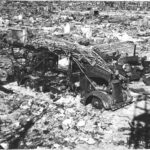
A new theory suggests co-pilot error may have contributed to the 2020 Air India Express crash in Kozhikode, India, which resulted in 21 fatalities, including both pilots. While earlier investigations pointed to pilot error related to landing techniques and adverse weather, a recent analysis focuses on the co-pilot’s alleged failure to call out critical deviations from standard operating procedures (SOPs) during the ill-fated landing attempt.
The investigation, as detailed in the source report, scrutinizes the co-pilot’s role in monitoring the aircraft’s parameters during the approach. Preliminary findings indicate that the co-pilot did not adequately alert the pilot-in-command to deviations in speed, altitude, and flap settings, all of which are crucial for a safe landing, particularly under challenging conditions. The report highlights that the aircraft was significantly higher and faster than recommended on its approach, and the co-pilot’s lack of intervention may have exacerbated the situation.
“The co-pilot’s failure to point out these deviations is a significant area of concern,” stated an aviation safety expert familiar with the investigation’s preliminary findings. “Adherence to SOPs and effective crew resource management are paramount, especially in adverse weather scenarios. The co-pilot’s role is not merely to assist, but to actively monitor and challenge when necessary to ensure safety.”
The Air India Express flight IX-1344, operating from Dubai to Kozhikode, overshot the runway on August 7, 2020, while attempting to land in heavy rain. The aircraft, a Boeing 737-800, subsequently plunged into a valley and broke apart, causing significant loss of life and injuries.
Previous investigations primarily focused on the pilot’s decision to proceed with the landing despite unfavorable weather conditions, including a tailwind and reduced visibility. The Air Accidents Investigation Bureau (AAIB) report, released in 2021, cited the pilot’s “non-adherence to standard operating procedures” as a major contributing factor. However, this new theory adds another layer of complexity, suggesting that the co-pilot’s inaction may have compounded the pilot’s errors.
The co-pilot, who also perished in the crash, had a substantial amount of flying experience. However, investigators are examining whether he was adequately trained and prepared to handle the specific challenges posed by the landing conditions at Kozhikode. They are also looking into the crew’s communication dynamics and whether there were any systemic issues within Air India Express that may have contributed to the co-pilot’s alleged failure to intervene.
The investigation is ongoing, and aviation authorities are expected to release a more comprehensive report in the coming months. This report will likely include detailed analysis of the flight data recorder (FDR) and cockpit voice recorder (CVR) data, as well as interviews with air traffic controllers, airline personnel, and surviving passengers. The findings could have significant implications for pilot training, crew resource management practices, and aviation safety regulations in India and globally.
The incident has raised serious concerns about safety protocols and training standards within Air India Express, particularly regarding operations in challenging weather conditions. Aviation experts emphasize the need for a thorough review of existing procedures and the implementation of measures to prevent similar accidents in the future. These measures may include enhanced training for co-pilots, improved communication protocols, and stricter adherence to SOPs during landing approaches.
Furthermore, the investigation is expected to examine the role of the air traffic controllers in providing weather updates and guidance to the flight crew. It will also assess the adequacy of the runway’s safety features, such as the runway end safety area (RESA), which is designed to provide a buffer zone for aircraft that overshoot the runway.
The Air India Express crash was one of the deadliest aviation accidents in India in recent years. It highlighted the inherent risks of flying in challenging weather conditions and the importance of rigorous safety standards and well-trained flight crews. The ongoing investigation underscores the commitment of aviation authorities to thoroughly investigate the causes of the accident and to implement measures to prevent similar tragedies from occurring in the future.
The preliminary findings suggesting co-pilot error have sparked debate among aviation professionals and the public. Some argue that it is unfair to blame a deceased pilot who cannot defend himself, while others maintain that a thorough investigation is necessary to identify all contributing factors and prevent future accidents. Regardless of the outcome, the Air India Express crash serves as a stark reminder of the importance of aviation safety and the need for continuous improvement in all aspects of flight operations.
Expanded Context and Analysis:
The Air India Express crash at Kozhikode brought to light several critical issues concerning aviation safety in India, particularly regarding operations at airports with tabletop runways and during monsoon season. The airport, situated on a plateau with steep drops at both ends, presents unique challenges for pilots, requiring precise landing techniques and adherence to safety protocols.
The previous AAIB report, while primarily focusing on the pilot’s role, also acknowledged the adverse weather conditions as a contributing factor. Heavy rainfall, strong tailwinds, and reduced visibility made the landing extremely difficult, even for experienced pilots. The report suggested that the pilot should have opted for a go-around, a procedure where the aircraft aborts the landing and circles around for another attempt, or diverted to an alternate airport with better weather conditions. However, the pilot chose to proceed with the landing, possibly influenced by factors such as time constraints, fuel considerations, and pressure to complete the flight.
The new theory focusing on the co-pilot’s potential errors adds a crucial dimension to the investigation. It highlights the importance of crew resource management (CRM), a set of training procedures designed to improve communication and decision-making among flight crew members. CRM emphasizes the importance of all crew members actively monitoring the aircraft’s parameters and challenging the pilot-in-command if they observe any deviations from standard operating procedures or unsafe conditions.
In the Air India Express crash, the co-pilot’s alleged failure to call out the excessive speed and altitude during the approach raises questions about the effectiveness of CRM training within the airline. It also highlights the potential for hierarchical dynamics within the cockpit to influence decision-making. Junior officers may be hesitant to challenge their superiors, even if they perceive a safety risk.
The investigation is likely to delve into the airline’s training programs and CRM protocols to identify any weaknesses and recommend improvements. It may also examine the airline’s safety culture and whether there are any systemic issues that discourage open communication and challenge within the flight crew.
Furthermore, the investigation is expected to analyze the flight data recorder (FDR) and cockpit voice recorder (CVR) data in detail to reconstruct the sequence of events leading up to the crash. The FDR data will provide information on the aircraft’s speed, altitude, flap settings, and other critical parameters. The CVR data will reveal the conversations between the pilots and air traffic controllers, providing valuable insights into their decision-making process and communication dynamics.
The findings of the investigation could have far-reaching implications for aviation safety regulations in India and globally. They may lead to stricter training requirements for pilots and co-pilots, improved CRM protocols, and enhanced safety features at airports with challenging runway conditions.
The Air India Express crash also raised questions about the adequacy of the runway end safety area (RESA) at Kozhikode Airport. The RESA is a designated area beyond the end of the runway designed to provide a buffer zone for aircraft that overshoot the runway. While Kozhikode Airport had a RESA, some experts argued that it was not long enough to prevent the aircraft from plunging into the valley.
The investigation is expected to assess the effectiveness of the RESA at Kozhikode Airport and to make recommendations for improving runway safety features at other airports with similar conditions. This may include extending the RESA, installing engineered materials arresting systems (EMAS), which are designed to quickly decelerate aircraft that overshoot the runway, or implementing other safety enhancements.
The Air India Express crash was a tragic reminder of the inherent risks of aviation and the importance of continuous vigilance in maintaining safety standards. The ongoing investigation is a critical step in understanding the causes of the accident and preventing similar tragedies from occurring in the future. The findings are expected to contribute to improved pilot training, enhanced CRM protocols, and stricter aviation safety regulations, ultimately making air travel safer for all.
The investigation also needs to look into the stress levels and fatigue of the crew. Long flights, especially those with challenging landing conditions, can lead to pilot fatigue, which can impair judgment and decision-making. The investigation should examine the crew’s duty schedule and rest periods to determine whether fatigue may have been a contributing factor in the accident. Airlines have a responsibility to ensure that their pilots are adequately rested and fit to fly, and regulators must enforce strict rules regarding duty time and rest periods.
Moreover, the role of automation in the cockpit needs to be carefully considered. Modern aircraft are equipped with sophisticated automation systems that can assist pilots in flying the aircraft and managing its systems. However, over-reliance on automation can lead to complacency and a loss of situational awareness. Pilots need to be proficient in both manual flying skills and the use of automation systems, and they must be able to effectively manage the transition between manual and automated flight modes. The investigation should examine whether the pilots were properly trained in the use of automation and whether they were able to effectively manage the aircraft’s systems during the landing approach.
Finally, the investigation should consider the human factors aspects of the accident. Human factors encompass a wide range of issues, including pilot training, cockpit design, crew resource management, and air traffic control procedures. Human factors experts can help to identify potential sources of error and to recommend improvements to reduce the risk of accidents. The investigation should involve human factors specialists who can analyze the accident and make recommendations to improve the overall safety of aviation.
In conclusion, the Air India Express crash was a complex event with multiple contributing factors. The ongoing investigation is expected to shed light on the causes of the accident and to lead to improvements in pilot training, crew resource management, aviation safety regulations, and airport safety features. The goal is to learn from this tragedy and to prevent similar accidents from occurring in the future, ensuring the safety of air travel for all. The focus on the co-pilot’s role is a new element that should bring light to the complexity and multiple factors that can lead to these incidents. By identifying the issues and taking the appropriate corrective actions, the aviation industry can continue to improve safety and prevent future accidents.
Frequent Asked Questions (FAQ)
Q1: What caused the Air India Express crash in Kozhikode in 2020?
A1: The Air India Express crash in Kozhikode in 2020 was primarily attributed to pilot error related to non-adherence to standard operating procedures (SOPs) during landing in adverse weather conditions, including heavy rain and tailwind. A new theory suggests the co-pilot’s failure to call out critical deviations from SOPs may have also contributed to the crash.
Q2: What is the new theory regarding the co-pilot’s role in the crash?
A2: The new theory suggests that the co-pilot did not adequately alert the pilot-in-command to deviations in speed, altitude, and flap settings during the approach, which are crucial for a safe landing, especially under challenging conditions. The aircraft was reportedly higher and faster than recommended, and the co-pilot’s lack of intervention may have exacerbated the situation.
Q3: What is Crew Resource Management (CRM) and how does it relate to this crash?
A3: Crew Resource Management (CRM) is a set of training procedures designed to improve communication and decision-making among flight crew members. It emphasizes the importance of all crew members actively monitoring the aircraft’s parameters and challenging the pilot-in-command if they observe any deviations from standard operating procedures or unsafe conditions. In this crash, the co-pilot’s alleged failure to call out deviations raises questions about the effectiveness of CRM training within the airline.
Q4: What are the potential implications of this investigation’s findings?
A4: The findings of the investigation could have far-reaching implications for aviation safety regulations, potentially leading to stricter training requirements for pilots and co-pilots, improved CRM protocols, enhanced safety features at airports with challenging runway conditions, and a review of existing procedures to prevent similar accidents in the future.
Q5: What is a RESA, and what role did it play in the Air India Express crash?
A5: RESA stands for Runway End Safety Area. It’s a designated area beyond the end of the runway designed to provide a buffer zone for aircraft that overshoot the runway. The RESA at Kozhikode Airport was deemed insufficient by some experts, and the investigation is expected to assess its effectiveness and make recommendations for improving runway safety features at other airports with similar conditions.









